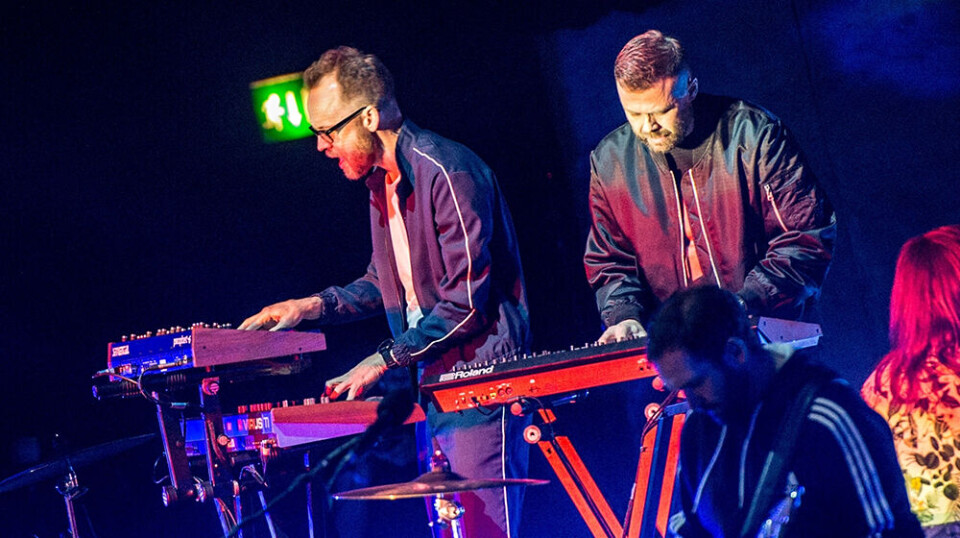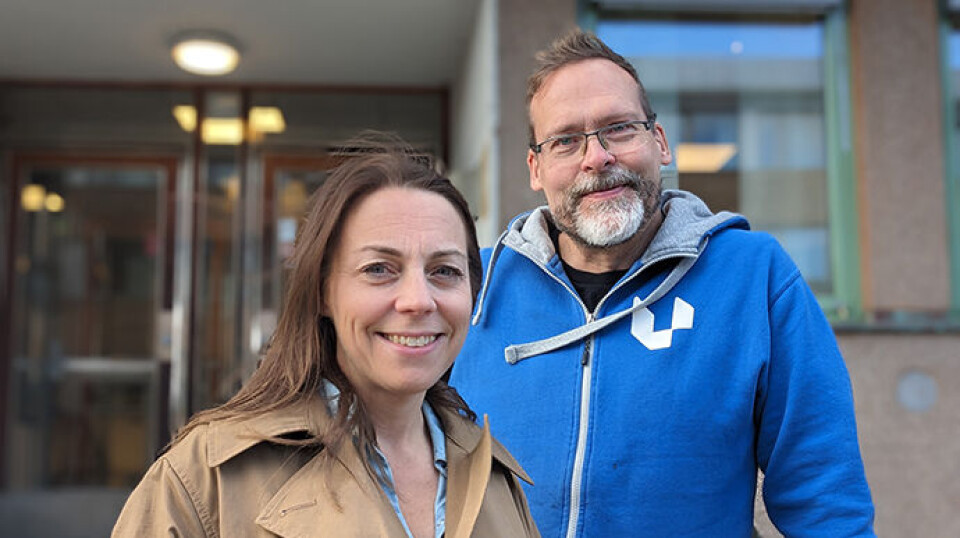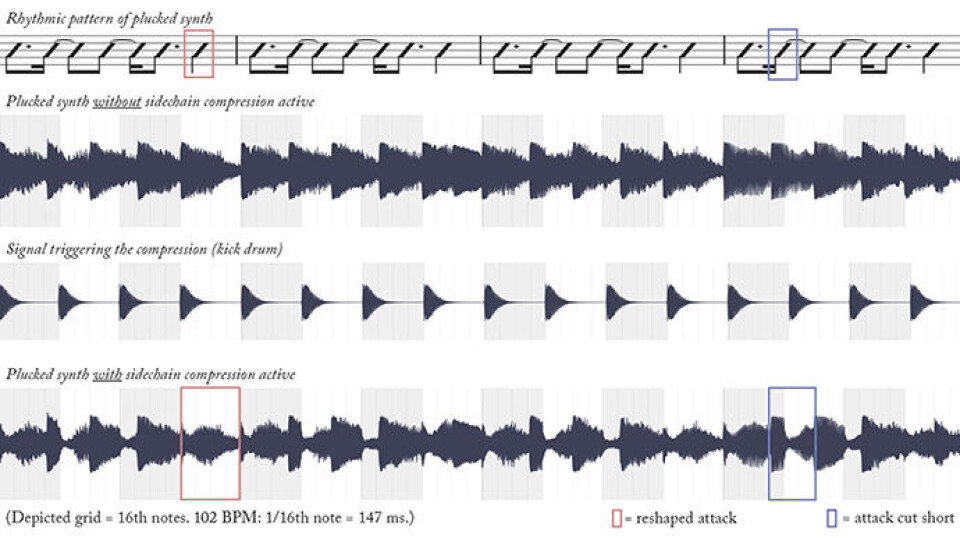THIS CONTENT IS BROUGHT TO YOU BY University of Oslo - read more

This is how they created the track that has more than 1.7 billion streams on Spotify
One of the biggest ever hits on Spotify came about after a thorough analysis of the rhythm of other tracks in the same genre. The producers were looking for a groove that makes people want to dance.
Many people dream of making a big hit, but how does one do it?
Before the Norwegian producer duo Seeb made their remix of the song I Took a Pill in Ibiza, they analysed songs that had done well in the electronic dance music (EDM) genre.
They believed that part of the key to success lay in the distinct rhythmic aspects, rhythm shifts so small that you barely notice them – so-called microrhythms.
In a study, researchers from the University of Oslo interviewed Seeb and three other Norwegian producers or producer teams within the EDM genre. The researchers wanted to examine the relationship between rhythm and sound in music production.
“All the producers were aware of how they worked with sound, rhythm, and microrhythms. They had different strategies, but they also did some of the same things,” Jon Marius Aareskjold-Drecker say.
He is a senior lecturer in Music Production at the Department of Musicology.
It's all about milliseconds
According to the researchers, only a few milliseconds of deviation from the beat grid is needed to create groove and make people want to move.
EDM is a genre that is easily perceived as being more ‘on-grid’ than other music, but the interviews with the producers indicated that even this seemingly rigid grid is in constant flux.
All of them worked hard to achieve a good groove, and they believed that a combination of ‘on-grid’ and ‘off-grid’ provided the grooviest result.
Moved sounds and adjusted onsets
They could manipulate the timing in two different ways: One was by shifting the onsets of sounds. The second was by modifying the sound and its intensity, which they mostly did in the editing phase.
Professor Ragnhild Brøvig points out that sound and rhythm mutually influence each other, something the producers were very aware of.
“Several of them experienced the connection between rhythm and sound as so integrated that it didn’t make sense to separate them from each other,” she says.

“If you change the rhythm just slightly, it can be so minimal that we don’t perceive it as a difference in timing, but we experience it as a change in sound. In some cases, modifying the sound can be heard as a change in rhythm,” she elaborates.
The producer duo analysed other music
For Seeb-members Simen Eriksrud and Espen Berg, the song jumpstarted their EDM career. I Took a Pill in Ibiza is originally an acoustic guitar song by American artist Mike Posner.
The remix became a much bigger hit than the original, and in 2016, it was the most streamed song on Spotify globally. To date, it has been streamed 1.77 billion times.
Eriksrud and Berg tweaked many things in the production process. Among other things, they analysed the so-called ‘swing quantisation’ in popular EDM songs.
This is a digital technique where the producers move one or more elements of the song slightly away from the beat grid.
Swing quantisation is measured as a percentage, and in pursuit of some kind of ideal, the duo landed on an interval of between 22 and 40 per cent swing, where 0 per cent gives a very tight expression and 100 per cent is so-called swing, which is often used in the blues genre.
The researchers also gained access to the producers’ project files for individual songs, allowing them to study the work in detail.
When they studied the project files for I Took a Pill in Ibiza, they found that the main chord arrangement was swing quantised in exactly this way: The onset of the notes on the second and fourth beats was 23 milliseconds behind.
Played music with their left hands
Several of the techniques used by Seeb were similar to those used by others. Both Charlotte Bendiks and the members of Seeb highlighted that they were deliberately out of time on some of the elements in order to make the music more human.
For example, Bendiks used percussion that she had recorded manually. As she is not a professional drummer, the rhythm wasn’t perfect, and she often chose to leave it that way.
The members of Seeb said that they preferred to play most of the instrumental sections themselves, instead of programming it on a computer.
They also said that they deliberately played parts of the music with their left hands, even though they are both right-handed.
In the further production process, the sounds were carefully adapted. However, some sounds were left unadjusted.
“They could sit and move elements back and forth for hours before they were satisfied,” Aareskjold-Drecker says.
Combinations of sounds can make the rythmic point of impact unclear
In the I Took a Pill in Ibiza project file, the researchers heard how the producers made adjustments to the soundscape that affected the perception of rhythm.
For example, they mixed a tambourine sound with a hi-hat – two cymbals facing each other and mounted on a stand, which drummers often use to mark subdivisions.
According to the researchers, layering sounds in this way can affect the perception of rhythm by making the exact point at which a sound is made less clear to the human ear.
The producers used several effects to create groove. For instance volume control, filters, and sidechain compression.
Sidechain compression is where one sound effect comes in and affects another sound, which can produce a pumping, or breathing soundscape.

No coincidence that the Ibiza song became popular
The researchers find it interesting that microrhythmic nuances prove to play a key role in a music genre that is often perceived as mechanical and robotic.
The producers used different strategies, but they all emphasised the importance of microrhythms and worked to find the human touch.
“We saw that very small microrhythmic nuances, such as a few milliseconds of deviation of a note from the grid, had a big impact on the listening experience. Because we had access to the project files, we were able to compare the song with and without effects, and with and without microrhythmic shifts,” Ragnhild Brøvig says.
The researchers point out that there are probably many explanations as to why I Took a Pill in Ibiza became such a success. For example, Seeb also had an innovative way of processing the artist’s voice.
“It's no coincidence that the song became so popular. The producers put in a lot of hard work to get there,” Aareskjold-Drecker says.
Reference:
Brøvig-Hanssen et al. A Grid in Flux: Sound and Timing in Electronic Dance Music, Music Theory Spectrum, vol. 44, 2021. DOI: 10.1093/mts/mtab013

This content is paid for and presented by the University of Oslo
This content is created by the University of Oslo's communication staff, who use this platform to communicate science and share results from research with the public. The University of Oslo is one of more than 80 owners of ScienceNorway.no. Read more here.
More content from the University of Oslo:
-
Queer opera singers: “I was too feminine, too ‘gay.’ I heard that on opera stages in both Asia and Europe”
-
Putin’s dream of the perfect family
-
How international standards are transforming the world
-
A researcher has listened to 480 versions of Hitler's favourite music. This is what he found
-
Researcher: "AI weakens our judgement"
-
New, worrying trend among incels, according to researcher




































